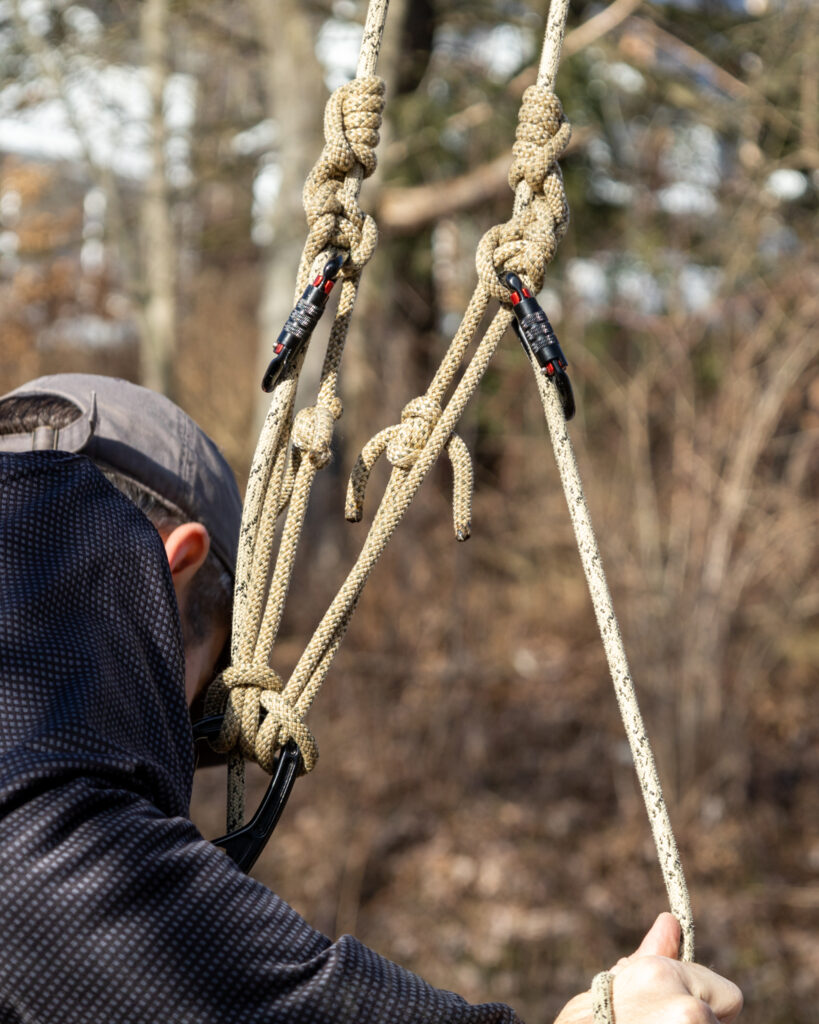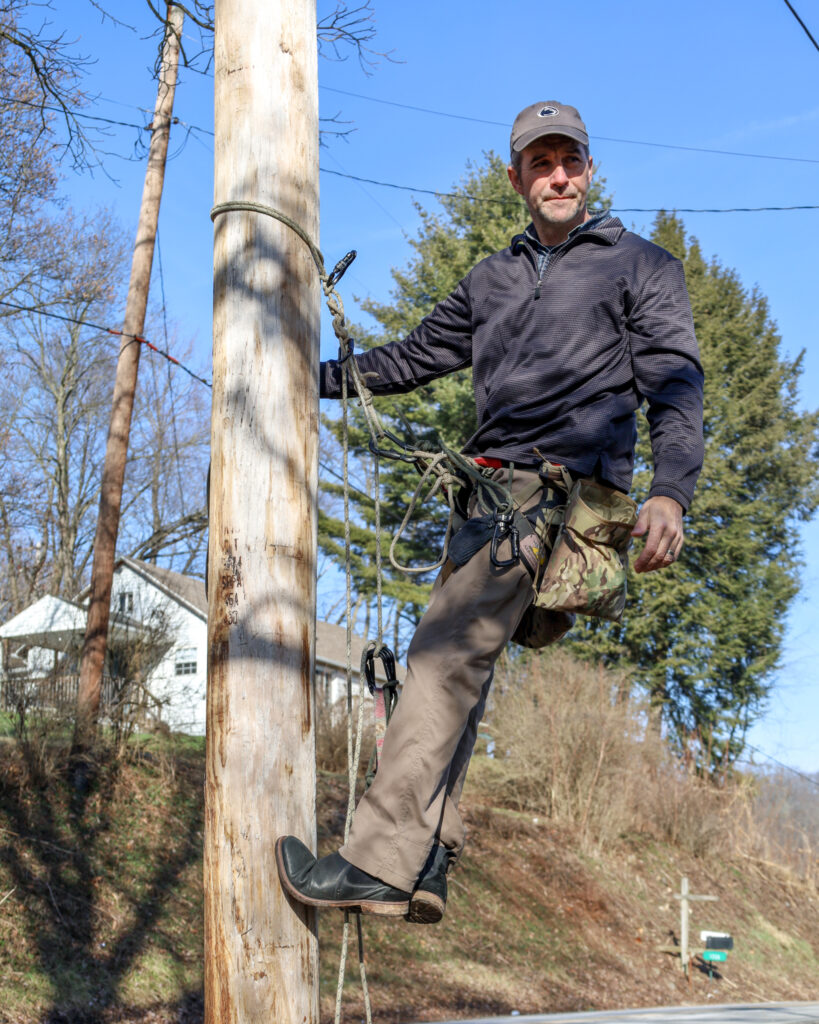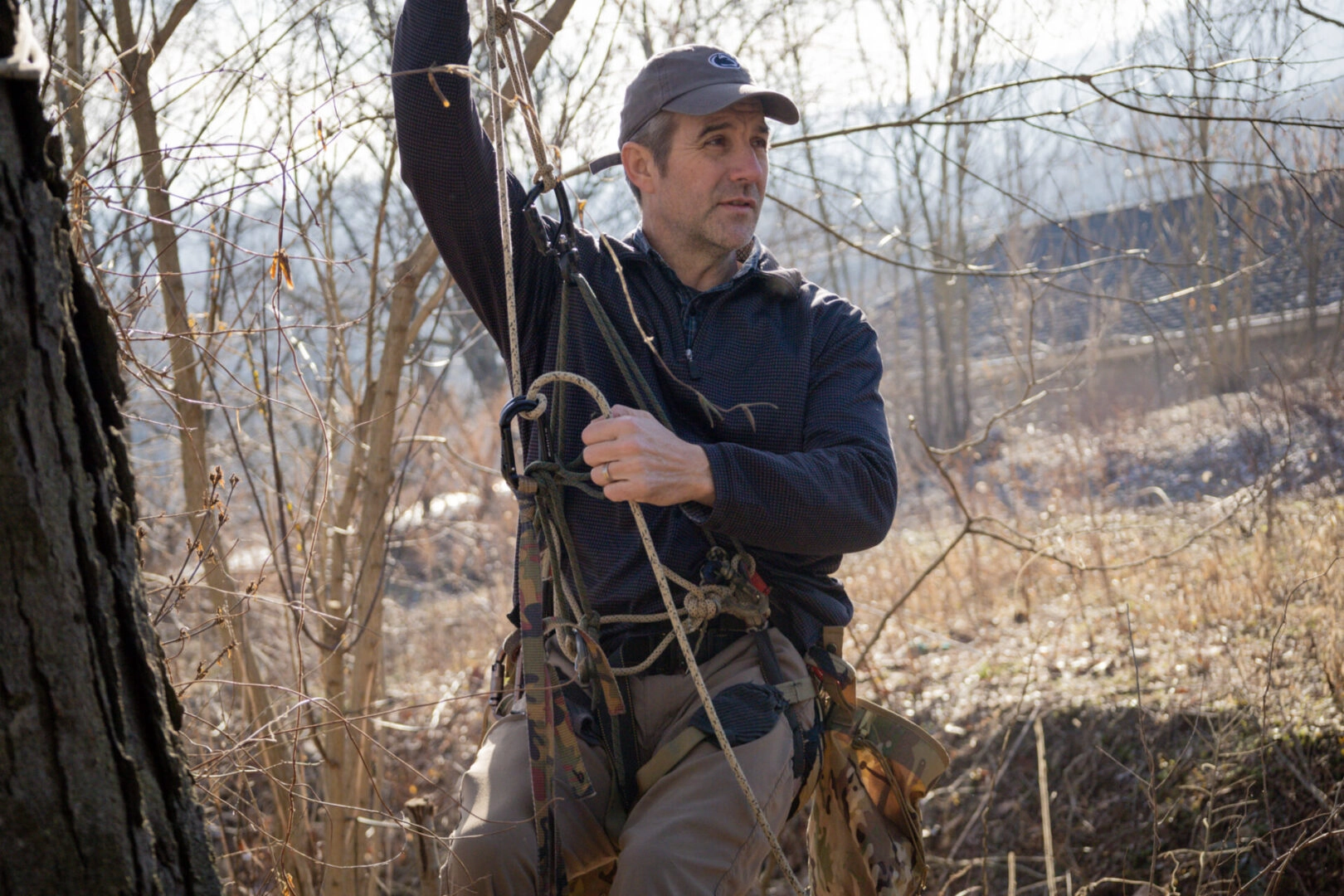We were recently visited by our good friend John, a saddle hunter and tree climber whose online tutorials have gained visibility and audience members at a rapid rate. He has his own website, YouTube channel, and Facebook group, which detail new and innovative climbing systems invented by himself. His new approaches and methods have garnered support from other saddle hunting community members, and his Patreon serves as a place for exclusive images and updates on his current projects.
We are partnering up with JRBClimbing to encourage new and seasoned saddle hunters alike to discover the safest ways to climb. His Patreon members will be of the first to provide thoughts and feedback on new products we develop for JRB’s climbing systems, and may have chances to try out the prototypes and help us refine them to be the most comfortable, practical, and cost-effective options on the saddle hunting market.
Learn more about John and his JRB Tree Climbing venture in this interview, and check out all of his invaluable online resources below.
How long have you been saddle hunting?
I started “saddle hunting” in 2008, after 30 years of climbing into elevated positions for purposes of deer hunting by other methods. Aware of the dangers of climbing, on my own initiative, I was seeking a safer and more mobile (smaller profile) climbing system which would be similar to how arborists climb trees. I did some research, learned how a Moving Rope System works, and created and refined one and climbed on it for a dozen years. In parallel with that, I also created and refined multiple generations of my own saddle or “flying seat” as my friends referred to it.
How did you become interested in saddle hunting?
I never actually heard of “saddle hunting” until 2018, about 10 years after I started doing it. I recall doing a few searches on the concept and not being impressed with what I saw: hunters on climbing sticks, lacking an adequate tie in during the climb, and not creating a tie in until they achieved hunting height. Once they did tie in, they used a (short) tether, which would not provide an emergency escape/rappel to ground in the event of an emergency. In short, I was not interested in Saddle Hunting when I first researched it. I felt it was unsafe and by the looks of the minimalist saddles which resembled some of my first prototypes, it was also uncomfortable.
What is the JRB Climbing System and what did the process of developing it look like?
Perhaps the “JRB Climbing System” was not the best choice of names for a climbing system, simply because I have devised multiple climbing systems over the years. I devised a unique Moving Rope System (MRS) which evolved for 12 years. After a decade of MRS, I also devised a Stationary Rope System (SRS/SRT) which uses no mechanical devices and my “Double Michoacan” assembly and “JRB Garda Hitch Footloop” as the enablers. Neither of these methods have been publicly disclosed, simply because: 1) I only built them for myself 2) In my mind, they were not unique enough to be worthy of name or recognition.
In 2020, through social media, I learned of others who were saddle hunting and climbing on ropes. I arranged a meeting in a state park in central Pennsylvania, which attracted attendees who drove as far as 6 hours, including other rope climbers. At this point, I still did not own a commercial saddle, and wanted to get some opinions on what to buy, and was successful in so doing. It was fun to meet others with similar interests and gain perspective. And it was at this meeting that I did my first demonstration of my MRS climbing system, which received strong support from the audience. I also got some questions and those questions fueled my own thought process and innovation.
When I returned from that trip, having seen multiple demonstrations on MRS and SRT, I had the following conclusions:
- MRS is terribly inefficient due to the friction caused by a rope grinding across a tree crotch.
- SRT is mechanically efficient, but has other disadvantages:
- Requires setting and retrieving an anchor, which is never fun for a hunter who is doing one or both in the dark.
- Is generally accepted to require the use of mechanical devices, which are expensive and difficult to trust (given my experience with friction hitches).
These conclusions caused me to ask an important question which was the seed for what is now known as the JRB Climbing Method: Is it possible to execute a STATIONARY rope climb but on a DOUBLED rope? And not need any mechanical devices? Background: Both MRS and SRT require a throwball and then feeding a rope over a tree crotch and back down to the climber… but that’s where they diverge. The SRT climber has to anchor one side. The MRS climber needs to configure the rest of the system and prepare to fight friction. What would it take to simply climb BOTH strands of rope in a stationary fashion? There would be no friction of a moving rope, and there would be no anchor. It took some trial and error, but I was able to accomplish this. One important piece was my “JRB Garda Hitch Footloop” which I already devised for SRT. To be clear, I did not invent the Garda Hitch, but I did figure out a way to solve its reputation for being unreliable. I also added redundancy for the moving frictional life-safety components in the climbing system, so that if a friction hitch were to slip or fail, the climber will not fall and has means to recover. After months of experimenting, via social media, I assembled a panel of reviewers from different industries including Arbor and Rescue. They reviewed a private video of a novel climbing method and gave me support and motivation. After that feedback, I created my very first YouTube video in Sept 2020.

Since that time, the system has evolved. I removed the 2nd set of friction hitches and integrated my redundancy into the footloop. I devised a new and better friction hitch, the JRB Ascender Hitch, and switched out my Michoacan’s for it. But it is still fundamentally the same: a double rope climbing method with a non-anchored but stationary rope, and highly efficient ascent profile.
Meanwhile, I started receiving other questions via social media: is it possible to climb a tree using a rope, but NOT require the use of a throwball? For example, how would we climb a telephone pole with ropes? This challenge led to the development of a 2nd and unique climbing method: the JRB Hitch climbing method. There is a separate playlist for that on my channel.

What’s the biggest mistake you’ve made that you’d want to tell other saddle hunters to avoid?
Fortunately, I have not made any significant mistakes. I have never fallen or been close to that kind of a situation. The biggest mistake I took is taking chances for the first 30 years of my hunting career. Now that I know better, it’s time to share what I know.
What is the newest system or innovation that you’ve been working on?
The Longhorn Hitch and Soft Shackle. The video was just released a few days before I typed this, and I had been working on it for about a year.
An ongoing challenge is devising and refining a single climbing SYSTEM which can be used for all of my climbing METHODS, (JRB doubled, JRB Hitch, MRS, SRT) and without modification, such as tying knots at the climb site.
Where do you see the future of saddle hunting going?
I see it growing, gaining more of an audience as word spreads organically. At the tragic expense of injuries to the current generation of climbers, I believe positive changes will evolve, and that saddle hunting will become safer. That is already happening, but we have a long way to go. Many of the improvements in safety are going to involve proper use of rope systems, whether they are used for the climb or just the protection of the climber while climbing by other means.
